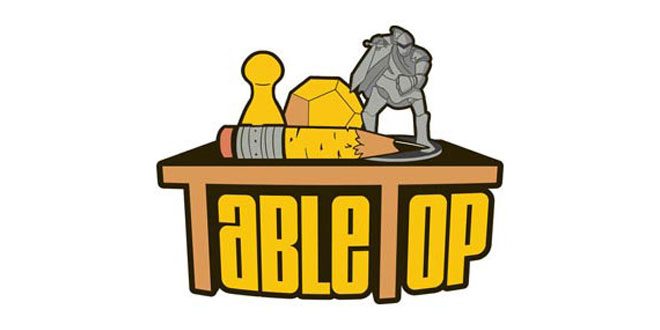
Canada has a long and proud history of paying tribute to our important historical events by immortalizing them on our coins. Unlike the U.S.A., we do not put heads of state on our coins, but instead other national symbols.
Canadians are obviously familiar with these symbols, and the meaning and history behind them. But to those living outside of Canada, they may find it fascinating, ridiculous and peculiar to see maple leaves, a Bluenose schooner, beaver, caribou, the Canadian Coat Of Arms, loons, and polar bears on our regularly circulated coins. If you are curious about the history behind Canada’s coins, you can read a little bit about each on the Royal Canadian Mint’s website.
Aside from our regularly circulated coins, the Royal Canadian Mint also mints coins to commemorate other events, such as the Olympics, which are made available in regular circulation and/or as collector’s items.
Now the Royal Canadian Mint has commemorated another piece of important Canadian history with the minting of a quarter that has a glow-in-the-dark dinosaur on it.
Yes, you read that correctly. GLOW-IN-THE-DARK COINS! WITH A FRAKKING DINOSAUR!
The first dinosaur to be commemorated in this new series of four coins is the Pachyrhinosaurus lakustai. This dinosaur is named after the Alberta science teacher, Al Lakusta, who discovered a rib fragment from the dinosaur while out hiking with a friend. When the area was finally excavated 13 years later, paleontologists discovered 3500 bones and 14 skulls. This discovery has since been determined to be the richest horned dinosaur bed in the world. You can read more about Al Lakusta and the Pipestone Creek Dinosaur Initiative, to be completed by the end of 2012, here.

The Royal Canadian Mint is using photo-luminescent technology that won’t wear off to create these coins. After “charging” the coin in sunlight, fluorescent, or incandescent light for 30-60 seconds and placing it in the dark, the glowing dinosaur skeleton will be revealed. The minting is limited to 25,000 coins worldwide.
William Shatner. A town named Vulcan. Glow-in-the-dark dinosaur coins. Just three reasons why Canada is awesome!
These commemorative coins cost $29.95 CAD and are available at Canada Post outlets and through the Royal Canadian Mint’s website.




> Unlike the U.S.A., we do not put heads of state on our coins…
Actually, we do.
Every Canadian coin has a picture of Queen Elizabeth on its back, and the Queen is our head of state.
I’m from the US, but I also collect Canadian coins too, and many world coins, not just US coins. I like many Canadian coins, and I also understand the symboism of the beaver on the nickel and the polar bear on the toonie and the maple leaf on almost all Canadian coins. I was always enthralled that Canada made a lot of their coins similar in size and material to US coins (all in a good way to show friendship between the two big dollar-using North American nations). The only thing I have to say about Canadian coins that I wish would happen but almost always does not, is that many actual historically famous Canadians often do not appear on Canadian coins (commemorative or circulating). Now, don’t get me fully wrong, the US has in recent years well-went in that direction too, which I think was bad ’cause it made the new US commems boring. Yet, I wish that both countries would start putting back great historical figures who helped shape both countries into what they are. In the US, for a while, many historical figures were placed on commems (until now), but in Candada, it seems that it was always very rare when a historical figure appeared on a commem. I will overall say that Canada’s commemorative coins are actually prettier than US commemorative coins, however.
Sorry, David. I meant this previous blog to be a whole comment to the site, not just to you.
> Unlike the U.S.A., we do not put heads of state on our coins, but instead other national symbols.
I can’t believe I actually read this… every Canadian knows the monarch is on the obverse. If you click on the RCM link in the article and select ‘flip coin’ on their website, the portrait of QEII is right there!
> Canada has a long and proud history of paying tribute to our important historical events by immortalizing them on our coins.
On our ‘commemerative coins’, perhaps, but certainly not on coins in common circulation. With the exception of the Bluenose on the dime and the Coat of Arms on the 50c, our coins have animals or leaves: hardly a tribute to historical events.
David and Sam:
I was hoping that by saying “heads of state”, it would be implied that I meant different heads of state. As soon as Queen Elizabeth II passes, and a new person ascends to the throne, she will no longer be on our coins. She will be replaced by her successor, who will be Prince Charles, if he is still alive.
Sam:
I beg to differ. The Maple Leaf is a long, historical symbol and is the only symbol to remain on our currency since Confederation.
The beaver represents the fur trade, throughout Rupert’s Land, that is responsible for Canada’s landscape.
Both the quarter and the “Toonie” get frequent make-overs on the reverse side, in honour of different historical events. On the quarter, the caribou has been replaced by the RCMP, the centennial, different anniversaries of Confederation–both Federal Confederation and different Provincial Confederations–Millennium coins, quarters with poppies, and the list goes on.
The “Toonie” has seen the polar bear replaced–another symbol of heritage–to honour the founding of Nunavut, the founding of Quebec City, coins to honour different generations, and more.
The only one that isn’t exactly historical, but more about Canadian heritage, is the “Loonie”.
As for the Bluenose, that doesn’t represent one ship, but Atlantic Canada’s fishing industry’s history.
The above is why I said, “heads of state on our coins, but instead other national symbols.” Because we do not put different Prime Ministers on our coins, and the Monarch only stays on our coins for as long as s/he is the Monarch. The rest are national symbols, representing heritage or history.
Jules,
David and Sam are RIGHT. Despite your attempt to spin it, your statements are just plain wrong. The FACTS are:
The Queen is the head of state, not the PMs. When you write the plural, it does not change the definition, and also as you point out yourself, the monarch depicted changes so different heads of state (the correct definition) do indeed appear on Canadian coins.
And US coins DO depict historical events, some may even say more explicitly than Canadian coins.
The penny- previously the Lincoln Memorial and now the Union Shield, representing Lincoln’s legacy and the preservation of the union following the US Civil War.
The nickel- eg. the Indian head and buffalo, representing the history of Americans Indians and the West; recently, the Louisiana Purchase and the expedition of Lewis and Clark.
The dime- a torch, olive branch, and oak branch symbolizing liberty, peace, and victory after the end of WWII
The quarter- eg. the US Bicentennial; the entry of each of the 50 states into the Union.
It’s a cool coin and I’m glad you pointed it out, Jules.
But you’re wrong about the “difference” between American and Canadian coins, as the others have pointed out here. The Queen is on every Canadian coin because she is the head of state. As one of the editors, I’m sorry we didn’t catch that sooner!
And along with the US coins mentioned in the comments, there are coins that show people other than heads of state, such as the Sacajawea dollar. The commemorative state quarter series had fruit, birds, and a yacht, among other state symbols.
So, not so different!
OMG cool. That is all.
All riiiiiight! I’d love to get my hands on one of those! 😀